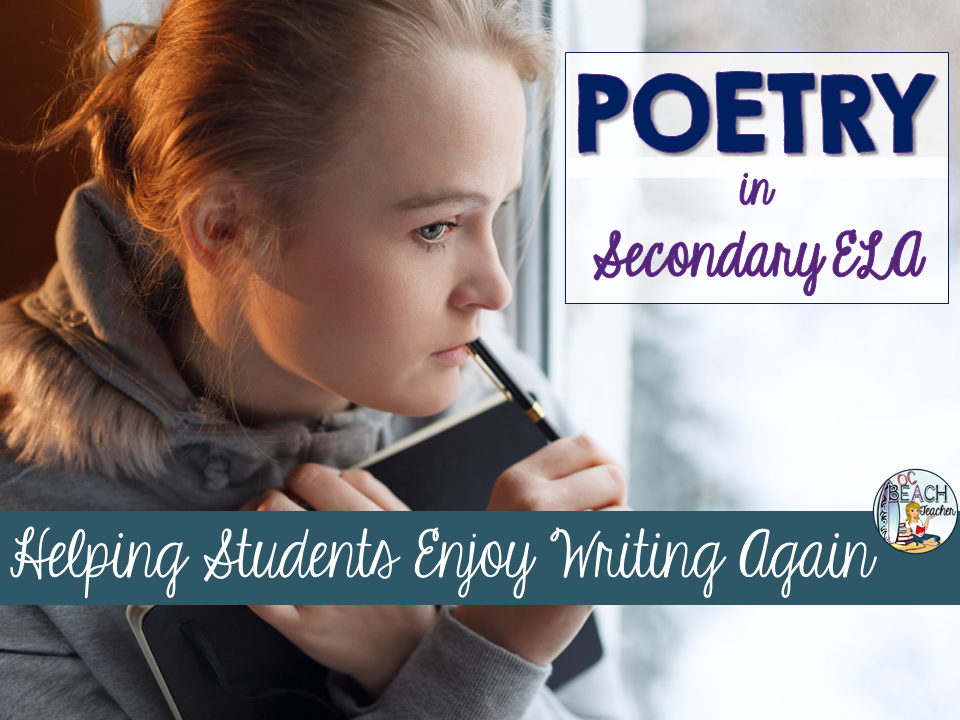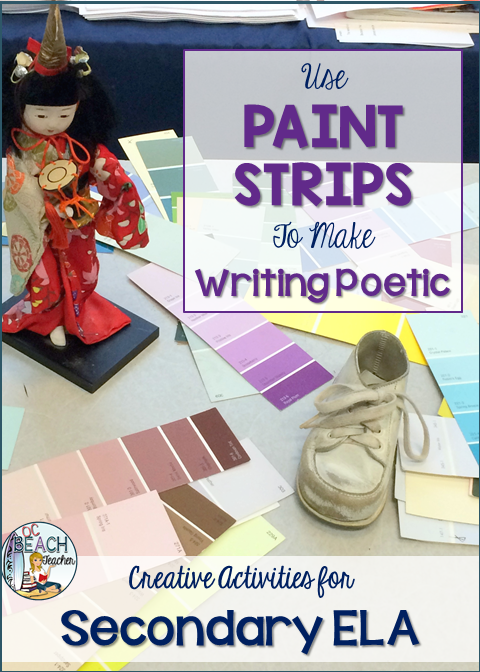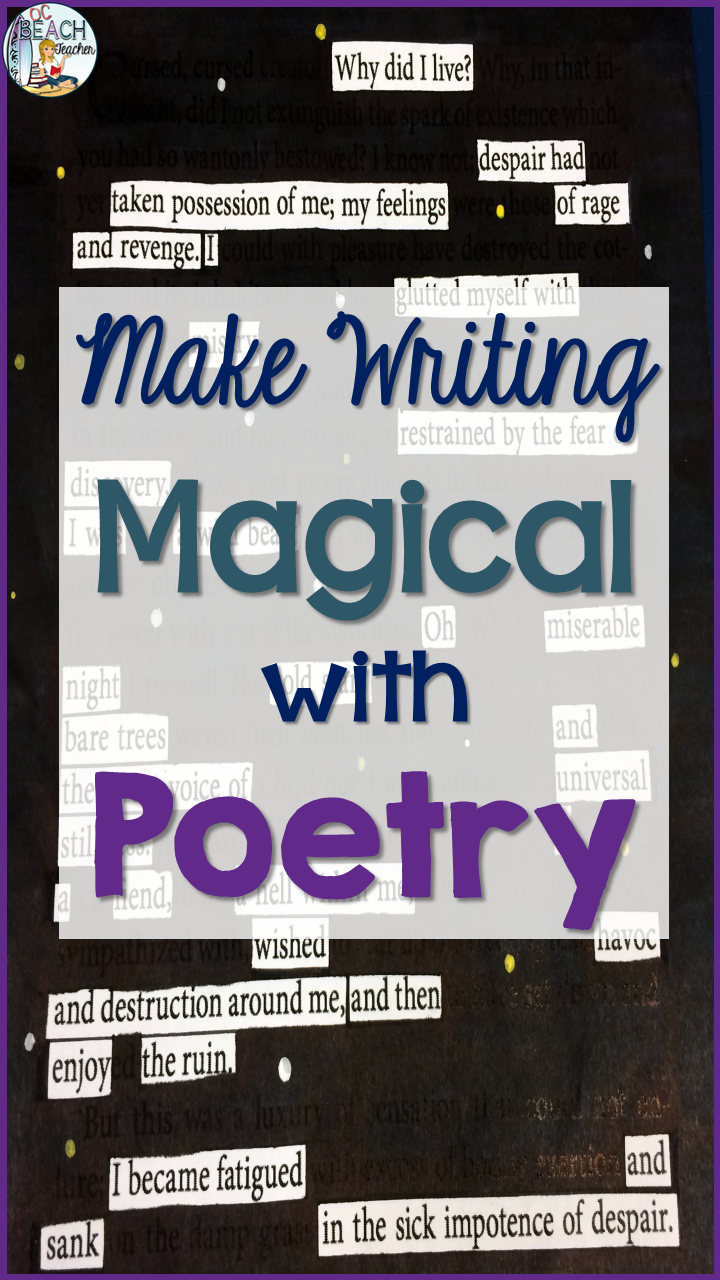Sometimes students are afraid to write.
They may have had negative experiences with writing in previous classes. Maybe they’ve only been required to write for standardized tests which has turned them off to writing. Perhaps, they just lack confidence in their writing abilities.
Well, one way to help them enjoy writing again is with poetry since it can give writers both freedom and an emotional outlet. Here are ways you can use creative activities and poetry to make writing pleasurable for them.
Have students “play” with words.
Use sensory writing to let students experiment with language. Give students paint strips that help them “find” new words such as heartthrob red, radish, goldfinch, or oceanside. Bring in interesting objects like dolls, figurines, toys, feathers, etc. for them to describe.
Give students dictionaries and tell them to randomly turn to several pages, finding at least five words. Ask them to use the words in several sentences or a poem. They’ll learn new vocabulary in a non-threatening way.
Assign students letters from the alphabet and ask them to write meaningful sentences using assonance or consonance. Let them read them aloud with a partner. Watch them giggle as their sentences turn into silly tongue twisters.
Encourage your students to see the “art” in poetry writing.
Blackout Poetry
Ask students to choose a page from a favorite novel to bring to class (or give them magazines and newspapers) so they can turn the page into a Blackout Poem. They use prose and
circle words to create lines of poetry on the page. They may choose words for various reasons such as because the like the sound of the word or the imagery it creates.
They may also choose words that are thematic. For instance, when I had students use a page from the novel Frankenstein, their poems captured the essence of the monster and ideas about dangerous knowledge. Finally, they used black marker to block out the rest of the text. When they were finished, they were always impressed by what they’ve created!
Poetry Pictures
Illustrate a line from a poem. Inspired by the free verse project, this lesson gets students to look closely at one line in a poem. You can find examples of these poetry photos on Flickr. (Be sure to preview which photos you would be appropriate for your students to view.) Students can do close readings of the lines or poetry and then illustrate them using photography, digital manipulation, and other creative techniques. They could even do this with a poem of their own.
Poetry Inspired by Personal Photos
Tell students to bring a favorite photo from home to use for writing a poem. First, they describe the literal picture with details and imagery. Then, students write about the story “behind” the photo. Ask them to tell the who, what, when, and where from the image. Also, challenge them to include the how and why. This is an effective way to teach students that a poem (and all of their writing) has multiple meanings.
Concrete Poetry
Use Shape Poems to help students understand the relationship between form and meaning. Start with examples, such as the poem, “Seal” by William Jay Smith or poems from Guillaume Apollinaire. Then brainstorm simple illustrations that they can draw; they use those shapes to inspire their writing.
Allow students to express emotions through poetry.
Poems for Two Voices
Teens are emotional! They need outlets for all of the feelings bubbling up inside of them. Dialogue poems get them to consider the complex emotions of two people or characters who have different points of view. These poems help students see the connections between people who may seem different but often have many similarities. There are innumerable relationships they can brainstorm: parent and child, boyfriend and girlfriend, cop and criminal…or, have them use characters from a work of fiction for the poem.
Figurative Language Poetry
Write metaphor and simile poems that describe feelings. In these poems, students use figurative language to describe emotions. For instance, what does love look like or sound like? Is love the sight of tender kiss between a mother and her baby or the sound of a sobbing girl whose heart has been broken? These poems are also a great way for students to better understand figurative language.
Expand on this idea with a Four Metaphor Poem. I found this lesson through my work with the National Writing Project and it comes from WritingFix, Students use metaphors to describe abstract ideas.
Really, there is so much you can do with poetry to make writing accessible to teens. And if you need more ideas for teaching poetry, check out these online resources to engage students in poetry.
What do you to get your students engaged with writing poetry and other forms of writing? Please share in the comments below.






2 Comments
This comment has been removed by a blog administrator.
thank you for sharing